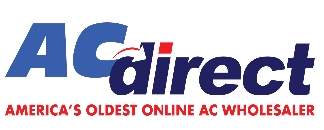HVAC and Food Safety and How to Prevent Spoilage and Contamination with the Right System
-
 By
Michael Haines
By
Michael Haines
- Sep 19, 2024

By Mike Haines 09/19 Hello, I’m Mike Haines. Today, we’re talking about a critical but often overlooked topic: the role HVAC systems play in ensuring food safety. Whether it’s in restaurants, supermarkets, or even in our homes, the HVAC system is crucial for maintaining the proper temperature and humidity levels needed to store food safely and prevent contamination. In this article, I’ll discuss how the right HVAC setup can help you keep food fresh, safe, and free from harmful bacteria.
Why HVAC Systems Matter for Food Safety
Temperature and humidity are two of the most important factors in food preservation and safety. If the environment isn’t controlled properly, food can spoil more quickly, become a breeding ground for bacteria, or suffer from contamination due to condensation or mold. HVAC systems in food storage and preparation areas are designed not only to keep indoor climates comfortable but also to create conditions that preserve food quality and safety.
HVAC systems must meet strict requirements in commercial kitchens, warehouses, supermarkets, and food processing plants to maintain food safety standards. Inadequate temperature control can cause foodborne illnesses, lead to product loss, and damage reputations. That’s why it’s essential to ensure that HVAC systems are optimized for these environments.
Key Takeaways
- Consistent temperature control is essential for food safety, preventing spoilage and contamination in food storage and preparation areas.
- Energy-efficient HVAC systems, such as the 3.5 ton AC unit with gas furnace, help maintain reliable temperature regulation while reducing operational costs.
- Humidity management is critical to preventing mold growth and food degradation. Ideal humidity levels for most food storage environments are between 50% and 60%.
- Advanced air filtration and ventilation systems protect food from airborne contaminants, ensuring better air quality and safety in food processing plants and kitchens.
- Regular HVAC maintenance is vital to ensure optimal performance, extend the life of the system, and safeguard food from spoilage and contamination.
Maintaining Optimal Temperature for Food Safety
The most obvious way HVAC impacts food safety is through temperature control. Different types of food require specific temperature ranges to stay safe for consumption, and an improperly maintained HVAC system can cause temperature fluctuations that result in spoilage or contamination.
Temperature Zones for Food Storage
In commercial settings like supermarkets and restaurants, different types of food need to be stored at various temperatures. HVAC systems must be designed to maintain these distinct zones. For example:
- Refrigerated foods: Meat, dairy, and perishable vegetables need to be kept at temperatures between 34°F and 40°F (1°C to 4°C) to prevent bacterial growth.
- Frozen foods: Items like frozen meats, vegetables, and prepared meals must be kept at or below 0°F (-18°C) to maintain their quality and prevent spoilage.
- Dry goods: Even non-perishable items like grains, flour, and canned goods benefit from being stored at a stable room temperature, typically around 68°F to 72°F (20°C to 22°C), to avoid issues like moisture buildup or pest infestations.
A well-functioning HVAC system is essential for consistently maintaining these temperature zones, ensuring that food stays safe for longer periods.
Preventing Temperature Fluctuations
One of the biggest threats to food safety is temperature fluctuations. These can happen due to power outages, HVAC malfunctions, or poorly designed systems that struggle to keep up with demand. When temperatures rise, even briefly, bacteria have the opportunity to multiply rapidly, putting food at risk of contamination.
Modern HVAC systems designed for food storage and preparation often include backup generators or redundancy measures to ensure that temperature remains consistent even during power outages or system failures. Additionally, advanced HVAC systems come equipped with remote monitoring technology, allowing managers to track temperature levels in real time and receive alerts if there are any fluctuations.
Humidity Control to Prevent Spoilage and Mold Growth
In addition to temperature, humidity levels are a key factor in preventing food spoilage. Improper humidity can cause mold growth, accelerate spoilage, or create condensation that contaminates food.
Ideal Humidity Levels for Food Storage
For most food storage environments, keeping the humidity level between 50% and 60% is recommended. This range helps prevent excess moisture from causing condensation, which can lead to mold growth and spoilage, while also preventing the air from becoming too dry and damaging food.
In commercial kitchens and food processing areas, where humidity levels can fluctuate due to steam from cooking or washing, it’s crucial to have an HVAC system that can quickly adjust humidity levels. This not only preserves the food but also prevents mold or mildew from developing in these high-humidity environments.
Dehumidification and Ventilation
Many modern HVAC systems include built-in dehumidifiers to help maintain optimal humidity levels in food storage areas. These systems work by pulling excess moisture out of the air, which helps keep food dry and less prone to spoilage.
Proper ventilation is also key in managing humidity levels. HVAC systems should be designed to circulate air efficiently, preventing moisture from building up in any one area. In kitchens, where cooking can generate large amounts of steam, ventilation systems should be powerful enough to remove this moisture quickly, keeping both the food and the environment safe.
Energy Efficiency and Reliable Temperature Control
In commercial kitchens and food storage areas, energy efficiency and consistent temperature control are vital for food safety. Systems like the 3.5 ton AC unit with gas furnace offer robust cooling while minimizing energy consumption, making them ideal for environments that require constant temperature regulation. These units are designed to operate efficiently, even during peak usage, reducing the risk of overheating and ensuring food stays fresh longer.
Energy efficiency is especially important in facilities where refrigeration is essential 24/7. Incorporating an energy-efficient propane HVAC system can significantly cut down on operational costs while ensuring reliable temperature control, which is critical for preventing spoilage in high-demand food environments.
Advanced HVAC Systems for Food Processing Plants
Food processing plants have unique HVAC needs, requiring both precise temperature control and effective air filtration to prevent cross-contamination. Installing a 4 ton AC unit with gas furnace provides powerful heating and cooling while maintaining air quality in separate zones, such as raw and cooked food areas. This separation is essential to ensure that pathogens don’t spread between different stages of food preparation.
Moreover, advanced HVAC systems equipped with gas heaters for homes can also be adapted for smaller-scale food preparation areas, providing reliable heating for maintaining food safety in colder climates. These systems ensure that food stays within safe temperature ranges, regardless of external weather conditions.
The Role of Air Quality in Food Safety
Indoor air quality is another important factor in maintaining food safety. Contaminants such as dust, mold spores, and bacteria can circulate in the air, potentially contaminating food and causing health risks.
Filtration Systems
High-efficiency air filters are essential for preventing airborne contaminants from affecting food quality. In food storage areas and commercial kitchens, HVAC systems should be equipped with filters that can trap particles as small as bacteria or mold spores. HEPA (High-Efficiency Particulate Air) filters are commonly used in these environments, as they can capture 99.97% of particles that are 0.3 microns or larger.
In addition to HEPA filters, UV germicidal lights can be added to HVAC systems to kill bacteria and viruses that may be circulating in the air. This can be especially useful in large food processing facilities or kitchens where hygiene is a top priority.
Positive Air Pressure
In food storage and preparation areas, it’s often a good idea to use positive air pressure systems. Positive air pressure means that more air is pumped into the room than is allowed to escape. This helps prevent contaminants from entering the space, reducing the risk of airborne pollutants affecting the food. Positive pressure is particularly important in high-risk areas like clean rooms or spaces where raw food is handled.
Specialized HVAC for Commercial Kitchens and Food Processing Plants
Commercial kitchens and food processing plants have unique HVAC requirements that go beyond basic temperature and humidity control. These environments must adhere to strict food safety regulations to ensure the health and safety of both workers and consumers.
Ventilation and Airflow
Commercial kitchens generate significant amounts of heat, moisture, and airborne particles, all of which can affect food safety. A properly designed HVAC system should provide adequate ventilation to remove excess heat and humidity while filtering out grease, smoke, and other contaminants.
Maintaining proper airflow is critical in food processing plants. HVAC systems must ensure that air flows from clean to dirty areas, preventing cross-contamination between raw and cooked food zones. This is often achieved by setting up separate HVAC systems for different areas of the facility, each with its own filtration and airflow controls.
Energy Efficiency and Food Safety
In environments where refrigeration and cooling are crucial, energy efficiency is always a concern. HVAC systems in food-related industries often run around the clock, so optimizing energy use is essential to reduce operating costs.
However, energy efficiency shouldn’t come at the expense of food safety. Cutting-edge HVAC systems now offer energy-saving features like variable speed fans, which adjust their output based on the current temperature and humidity levels, reducing energy consumption without compromising safety. Some systems also integrate with building automation systems (BAS) to fine-tune HVAC operations based on real-time data, further enhancing efficiency and safety.
The Importance of Regular Maintenance
Maintaining HVAC systems is essential to ensure that they continue to operate efficiently and keep food safe. Regular maintenance not only extends the lifespan of the equipment but also prevents unexpected breakdowns that could jeopardize food safety.
Routine Inspections
It is crucial to schedule routine inspections of HVAC systems in food storage and preparation areas. These inspections should check for issues like refrigerant leaks, clogged filters, or faulty thermostats, all of which could lead to temperature fluctuations or poor air quality.
During maintenance, it’s also important to clean and replace filters, check the seals around refrigerated areas, and ensure that ventilation systems are functioning properly. A well-maintained HVAC system will keep temperature, humidity, and air quality levels in the optimal range, reducing the risk of food spoilage or contamination.
Final Thoughts
HVAC systems play an essential role in food safety, ensuring that temperature, humidity, and air quality are maintained at optimal levels to prevent spoilage and contamination. From controlling temperature fluctuations and humidity to ensuring clean, filtered air, a properly designed and maintained HVAC system can make all the difference in keeping food safe. Whether it’s in a commercial kitchen, supermarket, or home, investing in the right HVAC setup will protect not only the food but also the health of those who consume it.

 and now, NASCAR Racing Sponsor
and now, NASCAR Racing Sponsor










